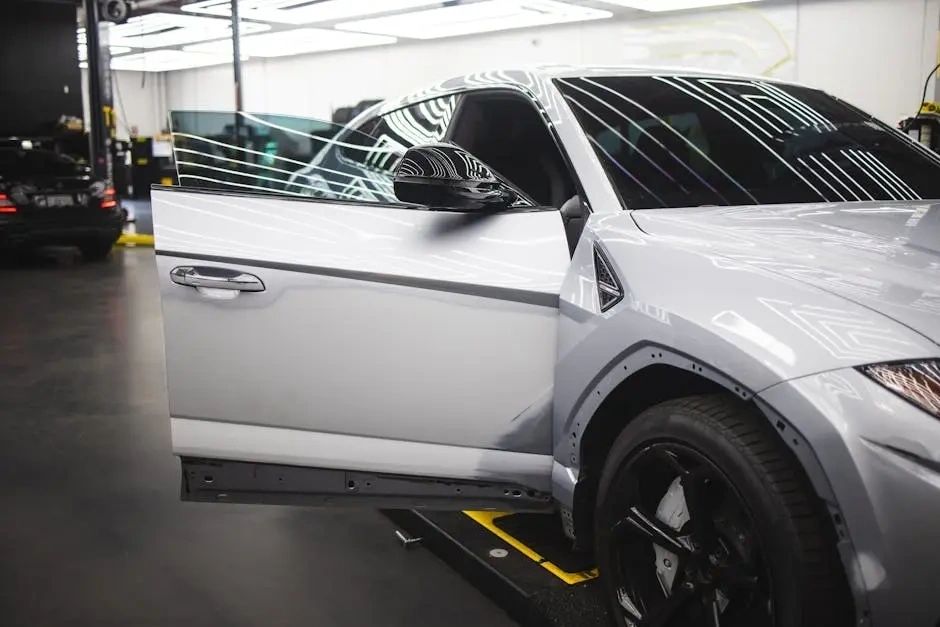
Can All Rock Chips Be Repaired on a Windshield?
Rock chips on a windshield can be a common annoyance, but not all chips are created equal. In this FAQ, we’ll explore the factors that determine whether a rock chip can be repaired, offering you insight into when a repair is possible and when a replacement might be necessary.
What Types of Rock Chips Can Be Repaired?
Certain types of chips, like bullseye, star breaks, and combination breaks, are often repairable. However, cracks extending beyond the chip may require a replacement. These types of damage typically respond well to repair techniques involving clear resin or epoxy that can restore the structural integrity of the glass.
Bullseye chips are circular with a cone in the outer layer of the glass. Star breaks have distinct lines radiating from the point of impact, resembling a star. Combination breaks, as the name suggests, are a mix of bullseye and star breaks. When dealt with promptly, they can often be repaired effectively, restoring the strength and clarity of your windshield.
However, not all rock chips are easily managed. Long cracks, especially those exceeding a few inches, can compromise the windshield’s ability to function properly. These often necessitate a complete replacement to ensure that the windshield remains structurally sound and capable of protecting occupants during a collision or rollover.
How Size Influences Repairability
Smaller chips, typically under the size of a quarter, are generally easier to repair. Larger chips may be harder to fix and could compromise the windshield’s integrity. When it comes to larger damage, the cost-effectiveness and reliability of repairs decrease, making replacement a more sensible option.
The size of the chip influences not just the feasibility of repair but also the visibility impact on the driver. Larger chips are more likely to obstruct the driver’s view, even after repair. Ensuring a clear line of sight is crucial for safe driving, and thus, larger damage often warrants a call for replacement.
In addition to visible size, the impact of the chip on surrounding glass also matters. Larger impacts can cause micro-cracks around the chip, which may not be immediately visible. Over time, these micro-cracks can expand, further destabilizing the windshield and leading to more extensive damage.
Location Matters
The location of the chip is crucial. Chips near the edges of the windshield or in the driver’s line of sight are often more challenging to repair. Edge damage can compromise the windshield’s structural integrity since edges provide crucial support for the glass.
When a chip occurs in the driver’s line of sight, any repair might still leave minor distortions or blemishes, which can be distracting and hazardous. This area is especially sensitive as it directly affects driving safety. For this reason, chips in this critical zone often require more careful consideration, impacting the decision to repair or replace.
Moreover, chips near sensors or built-in heads-up displays can affect the functionality of these systems. Newer vehicles often come with Advanced Driver Assistance Systems (ADAS), which rely on clear windshields for cameras and sensors to function correctly. Chips in these areas may affect system accuracy, necessitating a replacement to maintain vehicle safety features.
How Deep is the Damage?
If the damage penetrates more than the outer layer of glass, it might be too deep to repair safely. Surface chips are more likely to be repairable because they only affect the outer layer and don’t compromise the inner safety layer of the windshield.
Windshields are made of laminated safety glass, consisting of two layers of glass with a layer of plastic in between. This design helps to hold the glass together in the event of a crash. Damage that goes beyond the outer layer into the plastic lamination or inner layer is usually beyond repair since it compromises the overall integrity of the windshield.
Technicians use various tools and techniques to determine the depth of a rock chip. This is crucial in deciding whether a repair will be durable and safe. Often, deep damages present challenges that simple repair materials can’t adequately address. In such cases, a replacement ensures continued safety and functionality.
Time Since the Chip Occurred
Prompt repairs are key. The longer you wait to address a chip, the more likely it is to spread and become irreparable. Elements like temperature changes and vibrations from driving can exacerbate the damage, leading to larger cracks.
When a rock chip is left unrepaired, dirt and moisture can penetrate the damaged area. This contamination can make it harder for repair materials to bond with the glass effectively. As a result, even minor chips can quickly become larger, more complex problems if neglected.
Additionally, rapid temperature changes can cause stress on a chipped windshield, especially if the vehicle is exposed to direct sunlight or cold weather. The expansion and contraction of the glass can cause the chip to spread. Addressing the issue promptly ensures that such factors do not turn a simple fix into a major replacement job.
Final Thoughts on Windshield Rock Chip Repair
Understanding the types of rock chips and the criteria for repair can save you time and money. Always consult a professional for the best advice tailored to your specific situation. Your windshield’s condition plays a crucial role in the safety and longevity of your vehicle.
